41 what is the purpose of paper chromatography
The purpose of this experiment is to identify individual, unknown amino acids and to identify the constituent amino acids in the hydrolysates of some common proteins. This identification is accomplished by comparing Rf values of known amino acids with Rf values of the unknown. The Paper Chromatography technique provides an easy way to separate the components of a … In the amino acid separation by paper chromatography, the solvent travel across ... with a stationary phase modified with Cu2+ are used for this purpose.
Mar 28, 2020 · The purpose of paper chromatography is to separate a mixture into its various components. Using a sample that is a mixture of several highly colored components, such as ink or leaf pigments, allows the scientist to see the components as they separate. With samples that do not display colors, other means of detection are necessary.

What is the purpose of paper chromatography
• In paper chromatography, the stationary phase is a very uniform absorbent paper. • The mobile phase is a suitable liquid solvent or mixture of solvents. How does chromatography work? • The basis of chromatography is that molecules are adsorbed onto the stationary phase at different rates... How does paper chromatography work? Although paper chromatography is simple to do, it is quite difficult to explain compared with thin layer You can therefore think of paper as being cellulose fibres with a very thin layer of water molecules bound to the surface. It is the interaction with this water... In paper chromatography the adsorbent is a sheet of paper of suitable texture and thickness. Chromatographic separation may proceed through the action of a single liquid phase in a process analogous to adsorption chromatography in columns. Since the natural water content of the paper, or selective imbibition of a hydrophilic component of the liquid phase by the paper …
What is the purpose of paper chromatography. Paper chromatography is used to separate mixtures of soluble substances. These are often coloured substances such as food colourings, inks, dyes or Two substances are likely to be the same if: they produce the same number of spots, and these match in colour. the spots travel the same distance up... Paper chromatography has a large range of uses. It was "rediscovered" ten years ago and its possible uses seems to grow rapidly. It is a laboratory test to help discover the components of a substance. In this article you will learn the definition, process and purpose of paper chromatography. Paper chromatography is used to separate liquids or gases into different components. The chromatography process has two different Whenever you do a chromatography experiment, the purpose is to separate the parts of a whole out; in this case, the whole was the pen dot and you were... What is Chromatography? The word chromatography originated from two greek words 'chroma' meaning 'colour' and 'graphine' meaning 'to write'. In the chromatographic technique, the mixture of substances is applied onto a phase called the stationary phase. The stationary phase may be solid or...
06/03/2020 . Page . 1. of . 11. Liquid Chromatography-Electrospray Ionization-High Resolution Mass Spectrometry (LC-ESI-HRMS) Method for the Determination of … Paper chromatography is no different; it uses paper as the stationary phase and a solvent as the mobile phase. The mobile phase travels through the stationary The purpose of chromatography in general is to separate molecules based on differences in size, charge or polarity, and solubility. Although paper chromatography is often considered outmoded, it remains one of the most widely used techniques in analyzing mixtures of purine and pyrimidine derivatives, including nucleosides and nucleotides. These compounds generally absorb ultraviolet (UV) radiation in the 250-300 nm range. Chromatography (from Greek χρώμα chroma, meaning "color") is the collective term for a family of laboratory techniques for the separation of mixtures. Basically, its a group of different methods used to separate or analyze mixtures.
In this video you'll learn:- What chromatography is used for- The process for setting up and carrying out paper chromatography- What the mobile and... Cutting up documents and papers can be a chore. That’s where shredders can be invaluable. If you don’t have a personal home shredder or have too many paper documents to eliminate, you may need to find a shredding service. Shredding document... Answer to: What is the purpose of the paper chromatography experiment? a.To separate photosynthetic pigments b.To see which type of paper... Since 1912, Davis Instruments has been one of the world's leading sources of test, measurement, control, and calibration instruments.
What is paper chromatography? Paper chromatography is a simple and cost-effective method of separating the components of a mixture. By using this procedure, the individual parts of the mixture can be identified after the components of the mixture have been separated.
Paper chromatography (PC) is a type of a planar chromatography whereby chromatography procedures are run on a specialized paper. Why it is best to use the farthest distance traveled by a sugar if and when the solvent went over the paper and what is the purpose of heating the...
Paper Chromatography Principle. The principle involved can be partition chromatography or adsorption chromatography. Partition chromatography because the substances are partitioned or distributed between liquid phases. The two phases are water held in pores of the filter paper and the other phase is a mobile phase which passes through the paper.
The purpose of paper chromatography is to separate a mixture into its various components. Using a sample that is a mixture of several highly colored components, such as ink or leaf pigments, allows the scientist to see the components as they separate.
Writing a research paper is a bit more difficult that a standard high school essay. You need to site sources, use academic data and show scientific examples. Before beginning, you’ll need guidelines for how to write a research paper. Before...
Paper chromatography has been primarily used for analysis of food colors in ice creams, sweets, drinks and beverages, jams and jellies. To ensure that no non- ...
Paper chromatography to separate a mixture into its components tutorial suitable for chemistry students. Describing Relative Solubility The further up the paper the sample spot moves, the more soluble it is in the mobile solvent phase and the less soluble it is the stationary phase.
Paper chromatography is an analytical method used to separate coloured chemicals or substances. Erwin Chargaff credits in Weintraub's history of the man the 1944 article by Consden...
The techniques of paper chromatography and paper electrophoresis are sufRciently intertwined as to be worth considering together, as indeed they often were in books and reviews at the height of their Essentially this equipment is the same as that now used for TLC and all that is required is a suitable.
Thermo Scientific Dionex Ion Chromatography (IC) systems are innovative IC systems designed for every performance and budget. Our IC systems include low-cost, high-pressure, capillary, and modular options for every analysis requirement.
This technique is a type of partition chromatography in which the substances are distributed between two liquids, i.e., one is the stationary liquid Cellulose filter paper is often used as the stationary phase in paper chromatography. Since it is hydrophilic, it is usually covered with thin film of water.
Polyethylenimine (PEI) or polyaziridine is a polymer with repeating units composed of the amine group and two carbon aliphatic CH 2 CH 2 spacers. Linear polyethyleneimines contain all secondary amines, in contrast to branched PEIs which …
04.09.2014 · Liquid Chromatography Testing Types and Applications. The basic function of chromatography is to separate organic and inorganic samples to the particulate and single cell level for the purpose of measuring and identifying those particulates. The elements of the experiment are: The mobile phase is the catalyst material
Paper chromatography is a chromatography technique used to separate mixture of chemical substances into its individual compounds. In figure below 6 is the horizontal line. Step 2: The sample needs to be separated is placed as a small drop or line on to the paper using capillary tube.
Paper chromatography is a type of planar chromatography which can be performed faster and in an easy way. It is useful for detection of components in a And Rf factor . linh on September 03, 2017: i have a question. what is the component of paper chromatography? shalini on August 08, 2016
06.08.2015 ... The purpose of chromatography in general is to separate molecules based on differences in size, charge or polarity, and solubility. Paper chromatography is ...
The only purpose of paper chromatography, in general, is to split the molecules based on distinctions in size, polarity, and solubility. Paper chromatography uses paper as the stationary phase and a solvent as the mobile phase. The mobile phase travels through the stationary phase and molecules come out in a differential manner.
Paper chromatography has proved to be very successful in the analysis of chemical compounds and lipid samples in particular. It is the simplest and commonest form of liquid-liquid chromatography. Whatman filter paper or commercially prepared cellulose plates are used for chromatographic...
With paper chromatography, the paper (cellulose paper) is typically suspended in a container that contains a shallow layer of the solvent (or Thin layer chromatography is also a qualitative analytical chromatography method that is commonly used for the purposes of separating nonvolatile molecules.
15.06.2016 ... Paper chromatography is used as a qualitative analytical chemistry technique for identifying and separating colored mixtures like pigments. It ...
Paper chromatography is a form of liquid chromatography where the basic principle involved can be either partition chromatography or adsorption Separation of the mixture is the result that is obtained from the differences in the affinities towards the water and mobile phase when travelling under...
Paper chromatography was introduced in 1944. In paper chromatography the stationary phase and the mobile phase are both liquid (partition chromatog- raphy, see Sect. 27.4.2 ). Paper generally serves as a support for the liquid stationary phase. The dis-solved sample is applied as a small spot or streak one half inch or more from the edge of a strip or square of filter paper …
27.09.2021 · Let excess liquid drip off the plate for a few seconds, then wipe the back of the plate with a paper towel (Figure 2.34c). Gently heat the plate to develop the spots. Preferably use a heat gun (Figure 2.34d), but a hotplate can also be used (Figure 2.35, charring is common).
In paper chromatography, the sample mixture is applied to a piece of filter paper, the edge of the paper is immersed in a solvent, and the solvent Forensic chemistry, the profession popularized by TV's "Quincy" is the application of chemical techniques to law. Many samples that are received in a...
What is chromatography? How does chromatography work? Chromatography is a pretty accurate description of what happens to ink on wet paper, because it literally means "color writing" (from the Greek words chroma and graphe ).
The purpose of chromatography is to identify different components such as the ink in a pen. Paper chromatography is carried out as follows. Samples (of ink or dye) are placed on the paper and distributed evenly. Then, the paper is rolled and stapled.
02.02.2022 · Most experiments and data gathering done for the purpose of improving groundwater quality involve the preparation of solutions to monitor and test contaminated water. Procedure Before the Activity. Gather materials and make copies of the Chromatography Lab Worksheet. Cut the chromatography paper into strips about two-inches wide. Cut at least ...
Reading and ripping: An award-winning team of journalists, designers, and videographers who tell brand stories through Fast Company's distinctive lens The future of innovation and technology in government for the greater good Our annual gui...
For paper chromatography, plant cells are broken open to release their pigment molecules. The choice of paper is important because if the fiber mesh is too dense (like printer paper), few of the pigment molecules will be small enough to navigate the maze of cellulose fibers to travel upward.
Paper chromatography, in analytical chemistry, a technique for separating dissolved chemical substances by taking advantage of their different rates of migration across sheets of paper. It is an inexpensive but powerful analytical tool that requires very small quantities of material.
Though this is a different kind of chromatography, it still separates mixtures of substances into the individual components, molecules, even atoms. The size and concentration of the component is determinant of the component's rate.
Paper chromatography is an effective technique for separating colored pigments from a mixture. A few drops of the mixture of colored pigments are placed on the filter To understand the principle of paper chromatography, we must learn what is partition chromatography. As the name suggests, partition...
In paper chromatography the adsorbent is a sheet of paper of suitable texture and thickness. Chromatographic separation may proceed through the action of a single liquid phase in a process analogous to adsorption chromatography in columns. Since the natural water content of the paper, or selective imbibition of a hydrophilic component of the liquid phase by the paper …
How does paper chromatography work? Although paper chromatography is simple to do, it is quite difficult to explain compared with thin layer You can therefore think of paper as being cellulose fibres with a very thin layer of water molecules bound to the surface. It is the interaction with this water...
• In paper chromatography, the stationary phase is a very uniform absorbent paper. • The mobile phase is a suitable liquid solvent or mixture of solvents. How does chromatography work? • The basis of chromatography is that molecules are adsorbed onto the stationary phase at different rates...




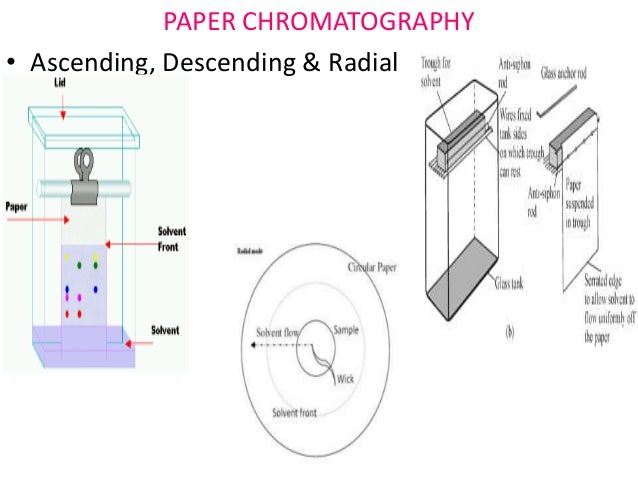

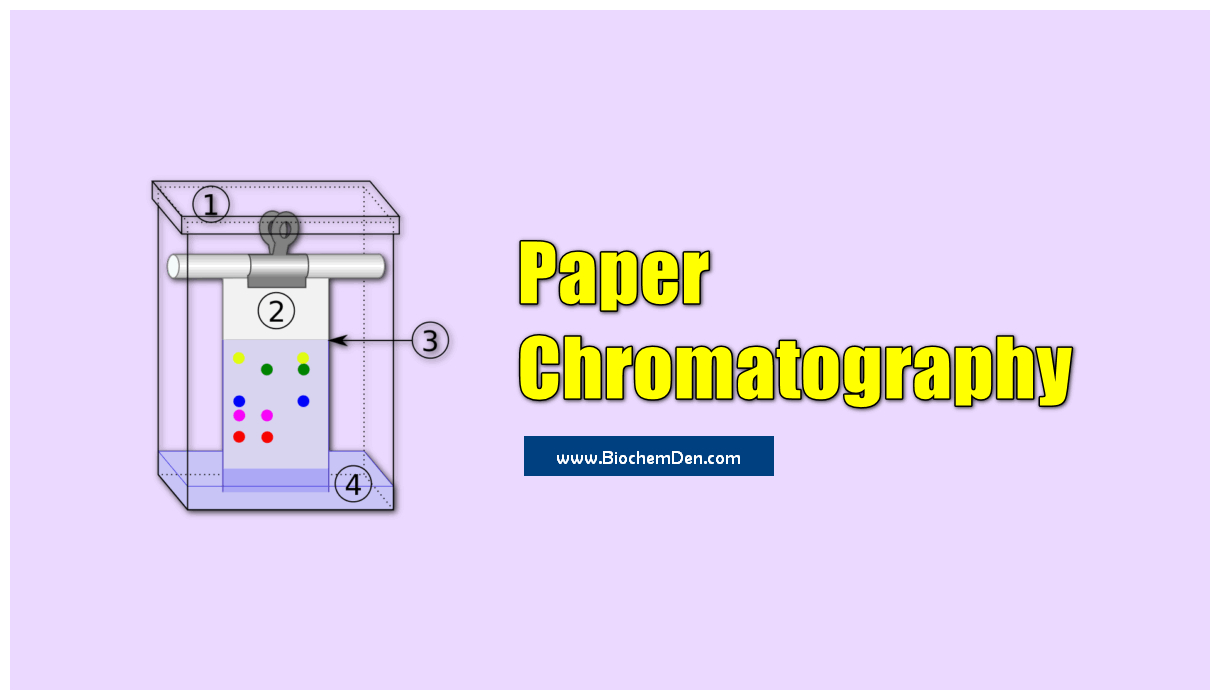




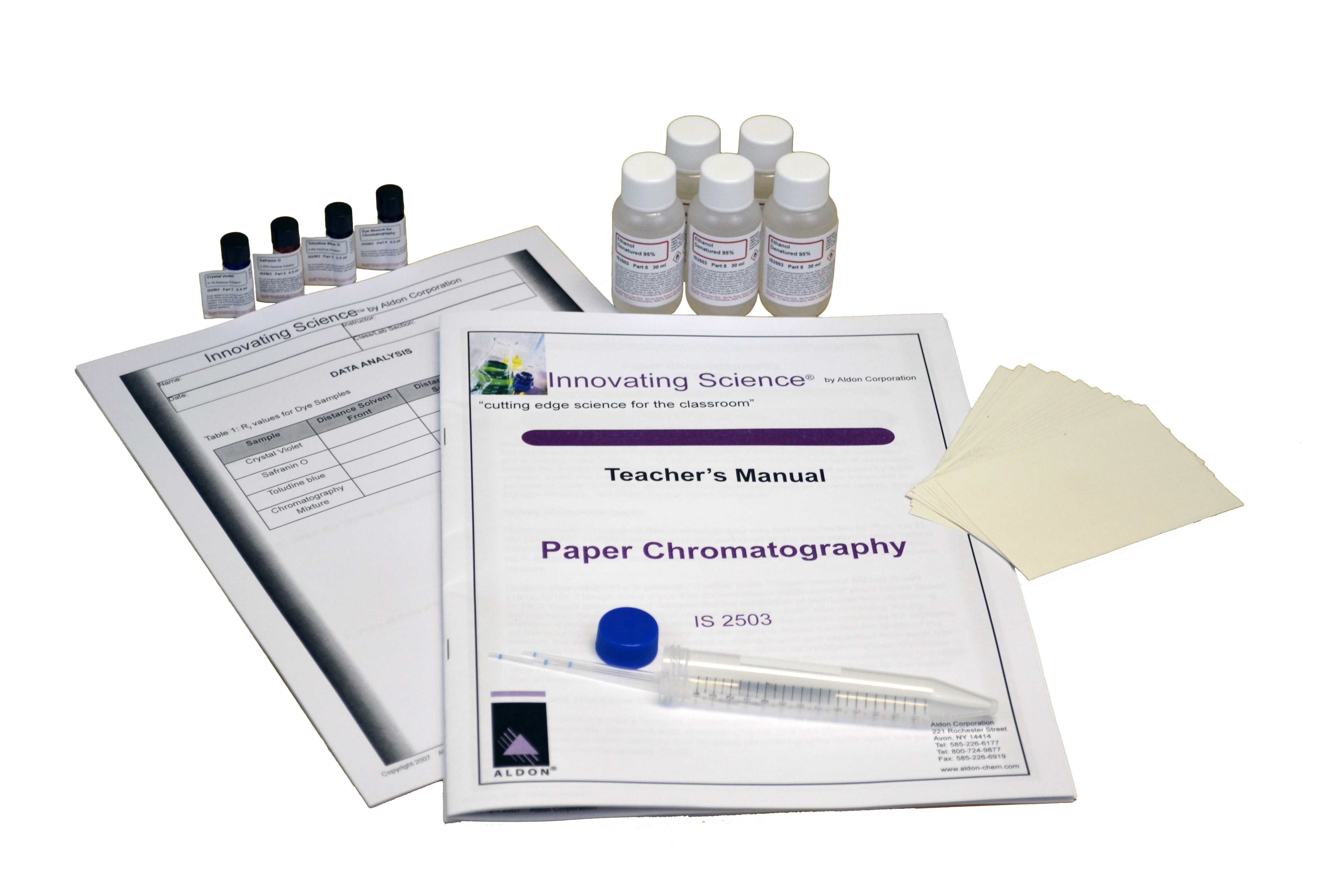






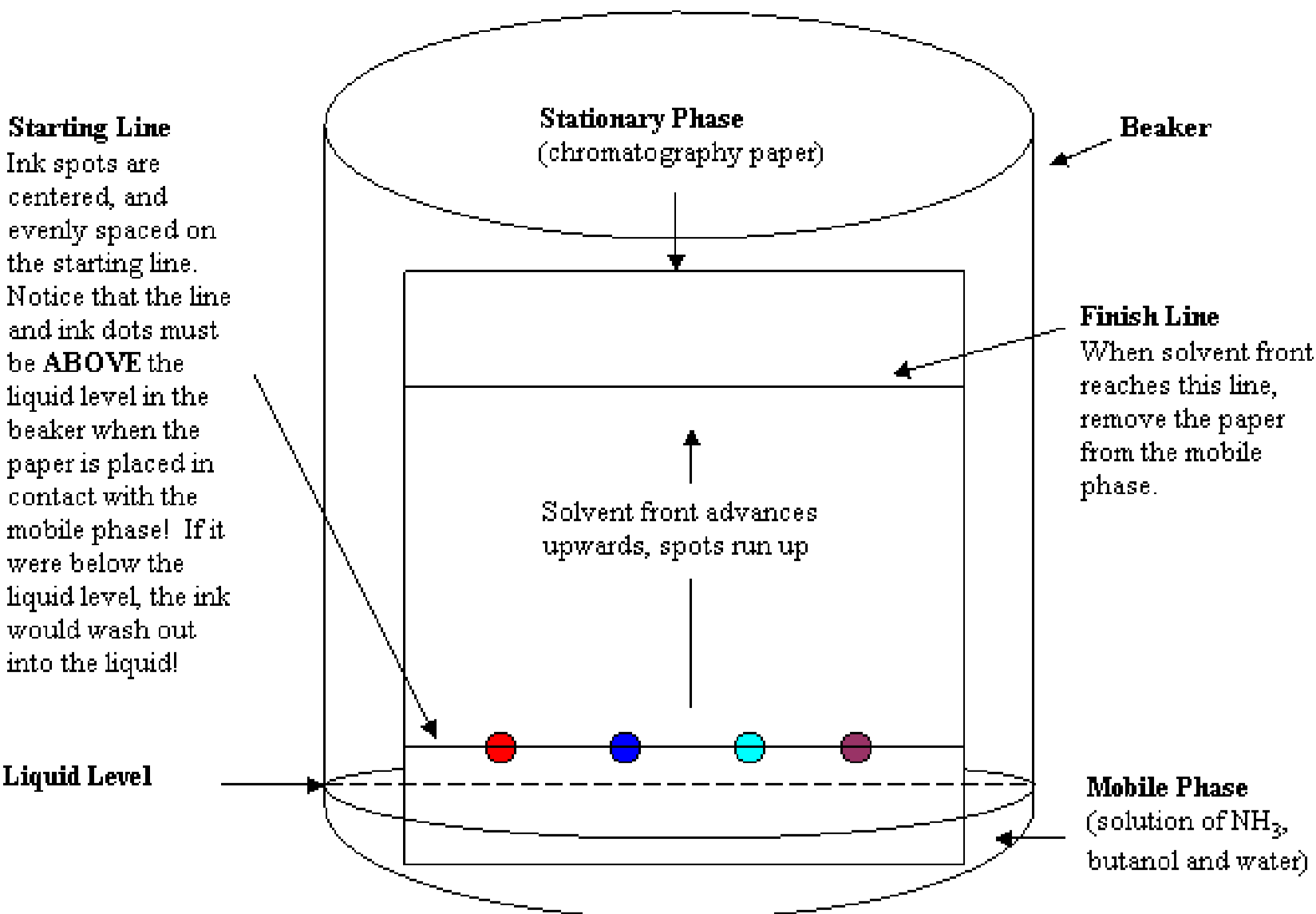


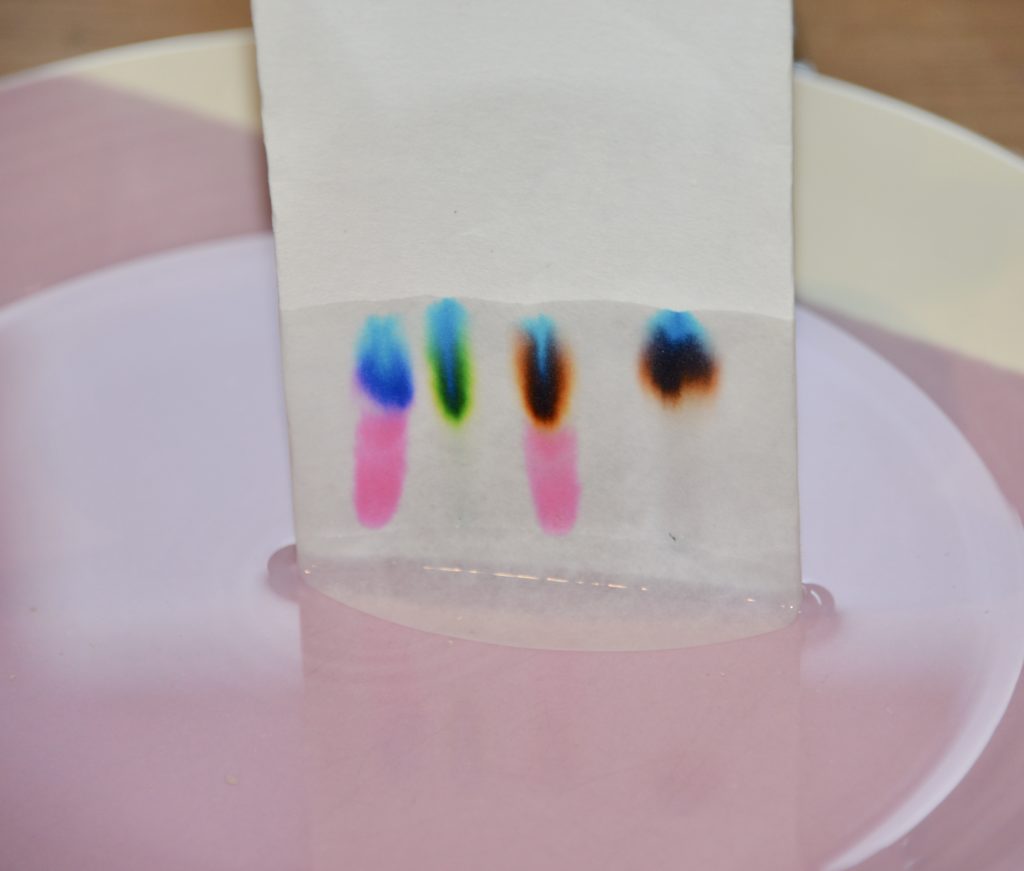

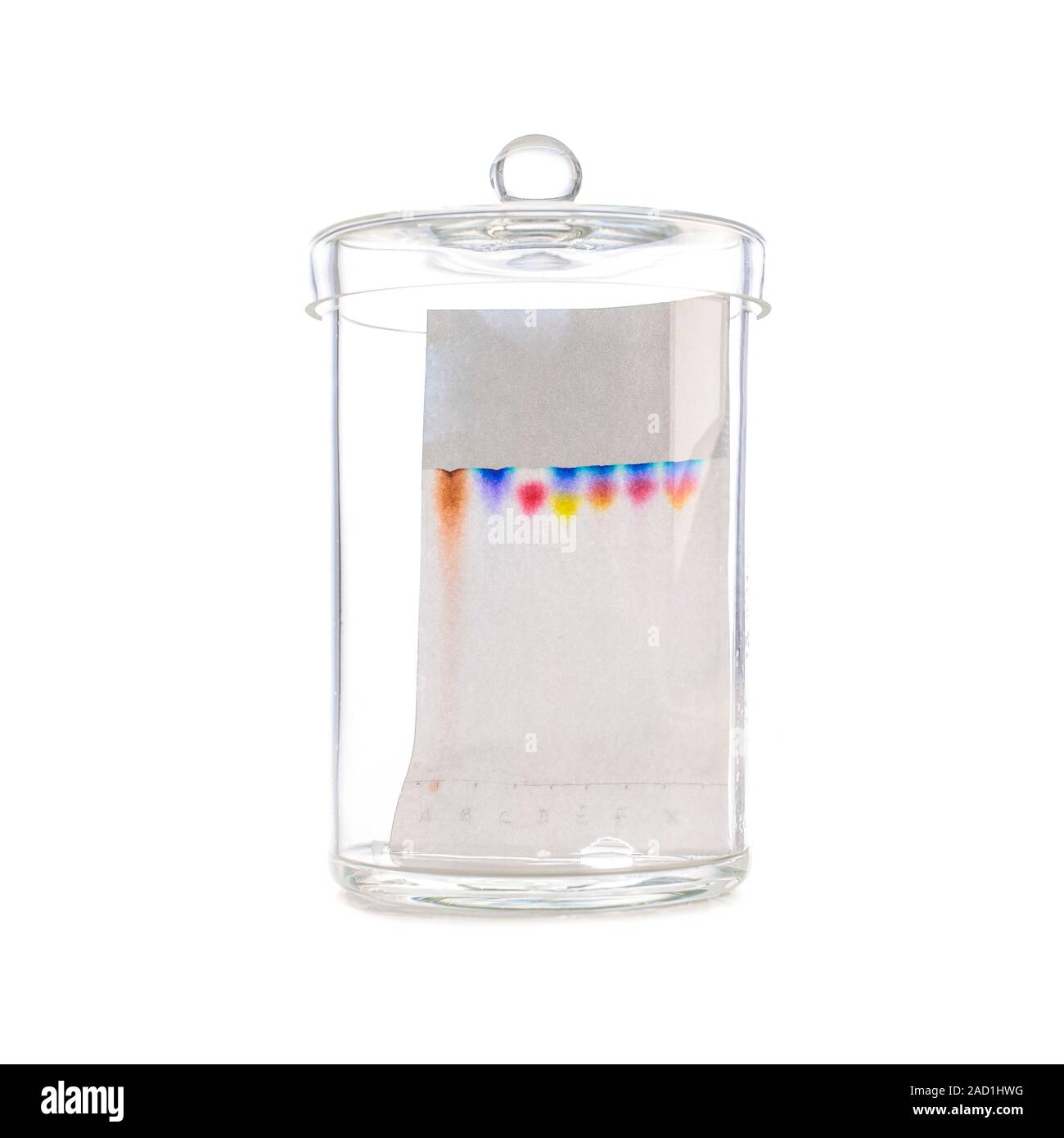

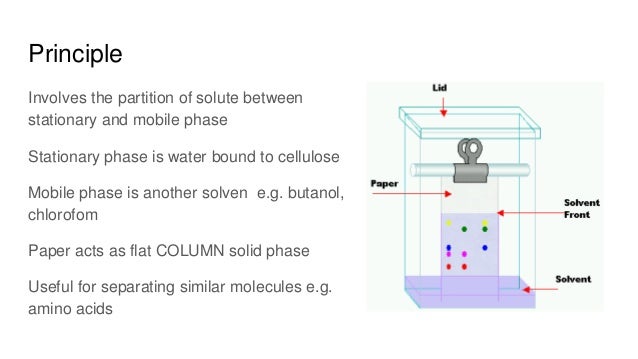




/Paper-28bd1a618e4a4d319f134dde4334c026.jpg)



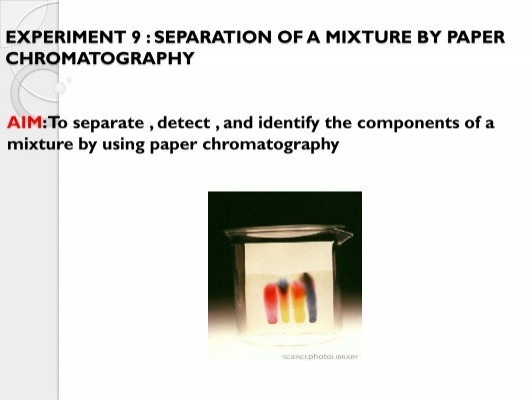

0 Response to "41 what is the purpose of paper chromatography"
Post a Comment